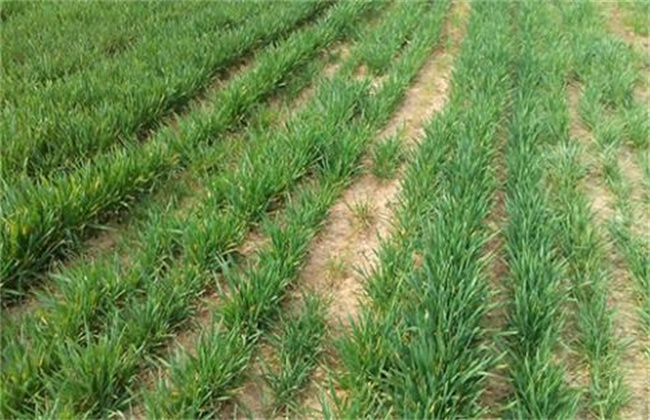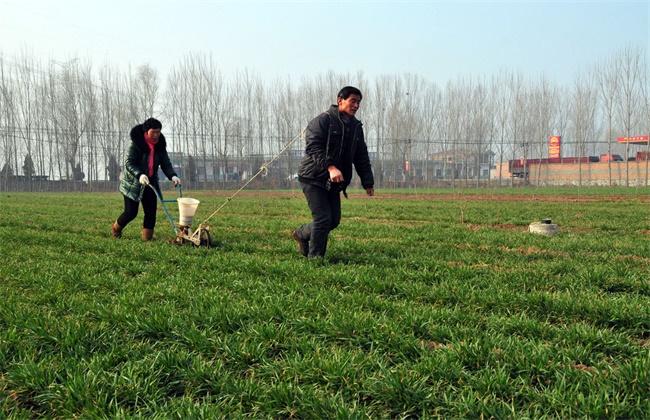Causes and Control measures of Wheat Seedling death in Winter and Spring
Some conditions often occur in the growth process of wheat, and dead seedlings are one of them, which do great harm to wheat growth, and the most common dead seedlings of wheat in winter and spring. So what is the cause of this? Come and have a look with the editor.

1. Causes of death of wheat seedlings in winter and spring
1. Internal cause
The ability of cold resistance and drought resistance of wheat itself is weak, if the variety with poor cold resistance is used in cultivation, it is very easy to suffer frost injury and die seedlings. Some farmers sow early and the wheat seedlings with pre-winter ear differentiation into two-ridge stage are weak in cold tolerance, and serious seedling death often occurs in case of freezing injury, while other late-sowing weak seedlings are very easy to die in case of cold injury and drought injury because of their own less sugar accumulation.
2. External cause
In addition to wheat itself and variety factors, adverse climate, soil conditions and inappropriate cultivation measures can also cause seedling death. For example, less precipitation in summer, insufficient soil moisture, less rain and snow in winter and spring and more cold wind will aggravate the soil drought and make the wheat tiller node in the cold and warm soil layer, which will also cause wheat physiological dehydration.
II. Measures to reduce seedling death
1. Select cold-resistant varieties
When selecting varieties with strong overwintering ability and good cold resistance, the most effective measures to prevent frost injury are the most effective measures. When introducing varieties, we should first understand its quality adaptability, and consider the cold resistance at maturity while taking into account the yield. The selected varieties should survive the winter safely in at least most local years.
2. Irrigation at seedling stage
For the early sowing wheat field sown with soil moisture, it can be watered at the tillering stage, and if the soil fertility is insufficient, a small amount of chemical fertilizer can be applied properly to promote the early development of seedlings so as to facilitate the seedlings to survive the winter safely. The management of late sowing wheat field should be based on improving soil temperature and preserving soil moisture, ploughing and loosening soil can be carried out, and watering is not suitable at seedling stage, otherwise the ground temperature will be reduced and the growth of seedlings will be affected.
3. Timely winter irrigation
Winter irrigation can form a good soil water environment, regulate soil nutrients in the plough layer, increase soil heat capacity, promote plant rooting and tillering, and cultivate strong seedlings. Watering overwintering water is not only beneficial to overwintering seedlings. It can also reduce the adverse effects of cold injury, drought injury and drastic temperature changes in early spring, which is an important measure to prevent the death of wheat seedlings in winter and spring.
4. Timely suppression
Repression can break the soil mass, stabilize the soil, make the tight combination of wheat root and soil, promote the development of root system, and increase and preserve soil moisture.
5. Timely coverage
Covering wheat with sand and breaking soil in winter can deepen the depth of tiller node and protect leaves near ground layer, reduce soil water evaporation, improve water condition at tiller node, and play a role of heat preservation and anti-freezing. Generally, covering soil 1-2 cm can play a good role in preventing freezing and protecting seedlings.
The above is the introduction of the causes and control measures of dead wheat seedlings in winter and spring. I hope I can help you. If you want to know more about it, please pay attention to us.
Related
- The first cup of black tea in spring, the flavor and history of tea gardens in Kenya, Africa
- The computer can not only choose potatoes, but also grow tea rice. AI will grow winter oolong tea champion.
- It is not only the inflated tea bitten by insects, but also engraved with the four seasons tea in Beipu.
- The Oriental Beauty Tea Festival in Zhuxian County takes the stage at the weekend to experience the plus-size feast of oil tea.
- & quot; Oriental Beauty Tea & Exploration of Emei in Hsinchu, the hometown of quot;
- The new variety of strawberry "Tainong 1" dessert is the first choice with mellow aroma. Crimson gorgeous
- History of Tea in Taiwan: from Wild Inner Mountain to Export Tea Garden
- Two types of Taiwan Oriental Beauty Black Tea won the British three-Star Award for Childhood Tea Xiang Zhang Jiaqi changed from pilot to champion tea maker.
- Banana species and varieties: the planting history of Taiwan Xianren banana and dwarf banana is long, is banana disease resistant?
- Coffee planting Technology: Qianjie Coffee from Seedling to harvesting



